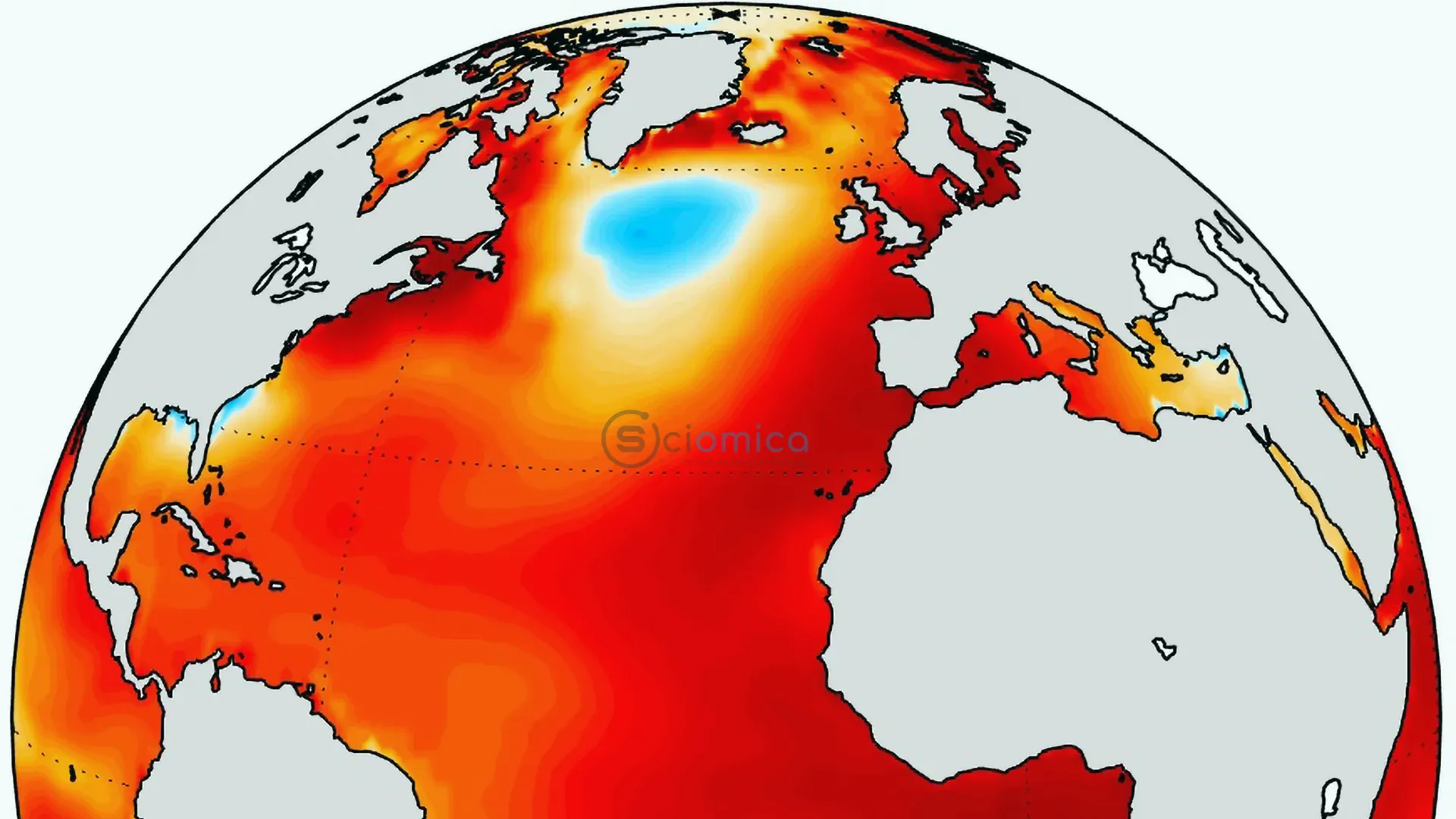For over a century, a striking cold patch of water located south of Greenland has clung to its frigid nature, presenting an intriguing anomaly amidst the general warming trend observed in the Atlantic Ocean. Recent research from the University of California, Riverside, sheds light on this phenomenon, attributing it to a significant weakening of the Atlantic Meridional Overturning Circulation (AMOC), a vital ocean current system that regulates climate patterns.
The study, led by climate scientist Wei Liu and doctoral student Kai-Yuan Li, reveals that the long-term changes in ocean temperatures and salinity patterns can be explained by the decreasing strength of the AMOC. This extensive current system serves as a natural conveyor belt, transferring warm, salty water from the tropical regions to the North Atlantic, while simultaneously moving cooler water towards the southern regions. A slowdown in this flow translates to reduced delivery of warmth and salinity, leading to the cooling and freshening effects observed in the waters south of Greenland.
Liu noted the longstanding curiosity surrounding the existence of this cold spot, suggesting that their findings point to a weakening AMOC as the most credible explanation. When the current dissipates, less warm, salty water reaches the North Atlantic, resulting in the cooler and fresher surface waters that have been documented in this area.
In their research, Liu and Li delved into a century’s worth of temperature and salinity data since direct AMOC observations have only been available for around 20 years. By reconstructing historical changes in the circulation system and juxtaposing these with nearly 100 climate models, the researchers discovered that only those simulations that accounted for a weakened AMOC aligned with real-world observations. In contrast, models suggesting a stronger AMOC could not replicate the observed cooling.
“This correlation is compelling,” said Li, emphasizing the consistency between the observed data and the weakened-AMOC scenario. Additionally, the study highlights a notable decrease in salinity, reinforcing the notion that a decline in the transport of warm, salty water northward is occurring.
The implications of the South Greenland anomaly extend beyond its singular peculiarity. This region is particularly sensitive to shifts in ocean circulation, with potential repercussions for weather systems across Europe, influencing rainfall patterns and altering the jet stream—a vital high-altitude air current that impacts climate across North America and Europe. Furthermore, the modulation of salinity and temperature may disrupt marine ecosystems, affecting the habitats of many marine species.
This research contributes to an ongoing debate among climate modelers regarding the primary drivers of the South Greenland cooling—whether ocean dynamics or atmospheric influences like aerosol pollution are at play. While some modern models suggested that declining aerosol emissions would strengthen the AMOC, this hypothesis failed to account for the observed cooling. Liu asserts that their findings indicate numerous recent models might be overly sensitive to aerosol changes, leading to inaccuracies in their projections for this region.
Through this work, the researchers have bolstered future climate forecasts, particularly concerning Europe, where the effects of the AMOC are most pronounced. The ability to draw significant conclusions from indirect evidence highlights an alternative approach to studying long-term changes in oceanic systems, especially in the absence of direct data.
Despite the lack of extensive direct historical data on the AMOC, the temperature and salinity records provide crucial insights into past conditions. Li emphasized that their research indicates a continuous weakening trend in the AMOC over the past century, a trajectory likely to persist if greenhouse gas emissions continue to rise.
As the climate landscape evolves, the influence of the South Greenland cold spot may increase, prompting scientists to unravel its origins to better prepare societies for upcoming changes. “The methodology we employed serves as a potent tool to grasp how the climate system has transformed, projecting its likely future under rising greenhouse gas scenarios,” Li concluded.
Reference:
- Kai-Yuan Li, Wei Liu. Weakened Atlantic Meridional Overturning Circulation causes the historical North Atlantic Warming Hole. Communications Earth & Environment, 2025; 6 (1) DOI: 10.1038/s43247-025-02403-0







